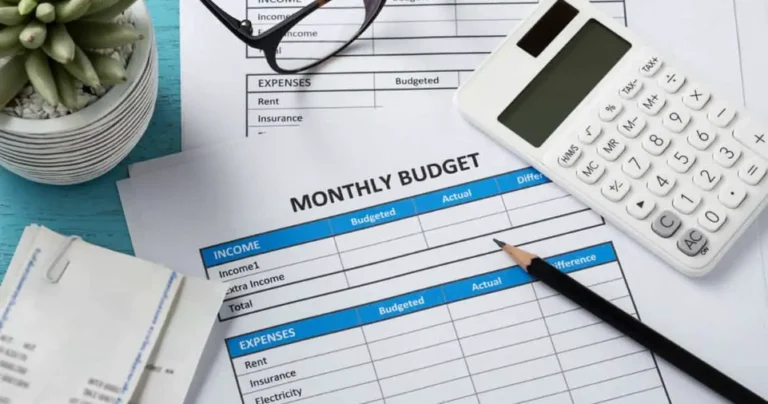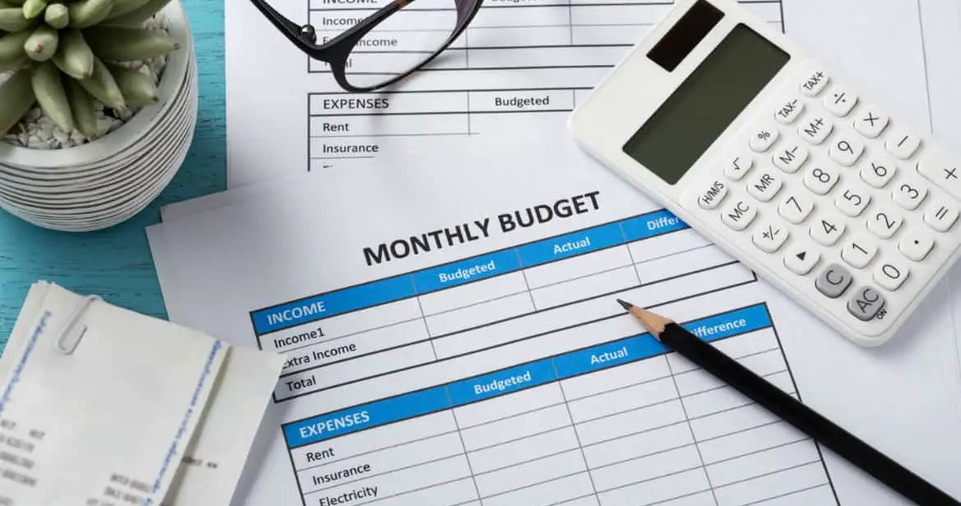Managing your finances can often feel overwhelming, but creating a monthly budget that actually works can provide clarity, reduce stress, and help you reach your financial goals. A well-structured budget acts as a roadmap for your income and expenses, ensuring that you live within your means while saving for the future.
In this guide, we’ll walk you through a step-by-step process to create a practical budget tailored to your financial situation.
We’ll also cover tips on sticking to your budget, overcoming common financial challenges, and leveraging technology to simplify your financial planning.
Additionally, we’ll discuss how to create long-term financial stability, adjust for major life changes, and incorporate tools that make managing a budget more efficient.
With proper budgeting habits, you can prepare for financial emergencies, reach significant milestones, and enjoy greater peace of mind.
Why Budgeting is Essential
A budget helps you:
- Gain control over your finances
- Track where your money is going
- Reduce unnecessary spending
- Save for future goals
- Avoid financial stress and debt accumulation
- Build financial independence and long-term stability
- Create better spending habits
- Prepare for unexpected expenses
- Improve your credit score and borrowing potential
- Make informed financial decisions and avoid impulse purchases
- Prioritize financial wellness and long-term security
ALSO READ:Avoid These 5 Money Mistakes: Tips for Managing Your Home Finances
Step-by-Step Guide to Creating a Monthly Budget

Assess Your Income
The first step in budgeting is knowing exactly how much money you bring in each month. Consider all income sources:
- Salary from your job (after taxes)
- Side hustles or freelance work
- Rental income
- Investments or dividends
- Government benefits or pension payments
- Bonuses, commissions, or irregular income streams
If your income fluctuates, calculate an average based on past earnings to ensure a more realistic budget.
Track Your Expenses
To create an accurate budget, you must understand where your money is going. Break down expenses into categories:
- Fixed Expenses (rent, mortgage, insurance, car payments, loan repayments)
- Variable Expenses (utilities, groceries, gas, entertainment, dining out, childcare, self-care, pet expenses)
- Savings & Investments (emergency fund, retirement, stocks, bonds, real estate, health savings accounts, college funds, travel savings)
- Debt Repayments (student loans, credit card bills, personal loans, medical debt, payday loans, car loans)
Categorize Your Spending
Once you track your expenses, organize them into necessary and discretionary spending.
- Necessary: Rent, utilities, groceries, insurance, debt minimum payments, essential healthcare, childcare
- Discretionary: Dining out, subscriptions, shopping, travel, gym memberships, entertainment, hobbies
| Category | Examples | Estimated Budget % |
|---|---|---|
| Housing | Rent/Mortgage, Property Tax | 30-35% |
| Utilities | Electricity, Water, Internet | 5-10% |
| Food | Groceries, Dining Out | 10-15% |
| Transportation | Gas, Public Transit, Car Loan | 10-15% |
| Savings | Emergency Fund, Investments | 10-20% |
| Entertainment | Streaming, Shopping, Travel | 5-10% |
| Debt Payments | Credit Cards, Loans | 5-15% |
| Healthcare | Insurance, Medical Costs | 5-10% |
| Miscellaneous | Gifts, Donations, Hobby Expenses | 2-5% |
| Education | Tuition, Books, Online Courses | 5-10% |
Set Realistic Goals
Define short-term and long-term financial goals to stay motivated. Examples:
- Short-Term Goals: Pay off credit card debt, build an emergency fund, save for a vacation, afford holiday shopping, pay off small loans
- Long-Term Goals: Save for a house, invest in retirement, start a business, pay off a mortgage, fund a child’s education, plan for early retirement, achieve financial independence
Choose a Budgeting Method
Different budgeting techniques work for different people. Consider:
- 50/30/20 Rule: 50% on needs, 30% on wants, 20% on savings and debt repayment
- Zero-Based Budgeting: Assign every dollar a purpose to ensure no money is wasted
- Envelope System: Allocate cash to envelopes for different spending categories
- Automated Budgeting Apps: Use apps like Mint, YNAB, or EveryDollar to track and manage expenses
- Reverse Budgeting: Focus on savings first, then allocate the rest to expenses
- Incremental Budgeting: Adjust spending in small steps rather than making drastic changes
- Priority-Based Budgeting: Allocate funds based on priority categories like debt reduction, savings, and investments
Adjust and Monitor Your Budget
Your budget should be flexible. Review and adjust monthly based on lifestyle changes, unexpected expenses, or income fluctuations.
- Review bank and credit card statements
- Cut back on unnecessary expenses
- Increase savings contributions when possible
- Reallocate funds based on priority shifts (e.g., medical expenses, home repairs, rising inflation costs, childcare needs)
- Prepare for annual expenses, such as insurance premiums, holiday spending, and tax obligations
- Track progress using financial planning software or spreadsheets
Strategies for Sticking to Your Budget
- Automate Savings: Set up direct transfers to your savings account
- Use Cash for Discretionary Spending: Helps control impulsive purchases
- Compare Prices and Look for Discounts: Use coupons, price-match policies, and reward programs
- Avoid Lifestyle Inflation: Increase savings rather than expenses when income rises
- Set Monthly Spending Limits: Create caps for entertainment, dining, and shopping
- Accountability Partner: Share budget goals with a friend or family member for added motivation
- Track Daily Spending: Regularly monitor transactions to prevent budget leaks
- Build a Sinking Fund: Save small amounts for future big expenses, such as car repairs or vacations
Common Budgeting Mistakes and How to Avoid Them
| Mistake | Solution |
|---|---|
| Underestimating Expenses | Track expenses diligently for accuracy |
| Ignoring Irregular Costs | Set aside money for annual expenses (insurance, gifts) |
| Being Too Strict | Allow flexibility for occasional indulgences |
| Not Saving for Emergencies | Build a 3-6 month emergency fund |
| Failing to Review Budget | Reevaluate your budget monthly |
| Using Credit Cards Unwisely | Pay off balances monthly to avoid interest |
| Not Accounting for Inflation | Adjust budget annually to match cost-of-living changes |
| Ignoring Small Purchases | Track even minor expenses to prevent overspending |
| Overspending on Convenience | Plan ahead for meals and expenses to avoid impulse buys |
How Technology Can Help with Budgeting

Modern technology has made budgeting easier than ever with the use of:
- Budgeting Apps: Track expenses, set goals, and automate savings
- Spending Trackers: Monitor daily expenses and flag unusual spending patterns
- Financial Dashboards: Provide an overview of your income, expenses, and net worth
- Investment Platforms: Apps like Acorns and Robinhood allow for automated investing
- AI-Driven Financial Advisors: Tools like Wealthfront provide automated investment strategies
- Subscription Managers: Apps that track and help cancel unwanted subscriptions
- Debt Payoff Calculators: Help create repayment strategies to minimize interest and debt duration
Conclusion: Take Control of Your Finances
A monthly budget is a powerful tool that helps you make informed financial decisions, reduce stress, and work toward your financial goals. By tracking income, categorizing expenses, setting goals, and adjusting when needed, you can create a budget that truly works for you. Consistency is key, and with the right tools and mindset, financial freedom is achievable.
Call to Action
Start your budgeting journey today! Choose a method that suits your lifestyle, track your spending, and take control of your financial future. Looking for budgeting tools? Check out our recommended budgeting apps and strategies to stay on track!







